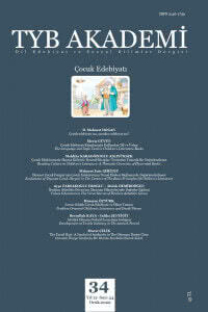“Biz Daha Ölmedik”: Belirsizlik ve Kriz Zamanlarından Edebiyat
İçinde bulunduğumuz bu tarihi süreçte, COVID-19 pandemisi gündelik hayata dair pratiklerimizi oldukça derinden etkilemiş, gelecekte ise birçok alanda uzun vadede önemli yapısal değişikliklere yol açacağının emarelerini vermiştir. Şimdiye ve geleceğe dair bilinmezliklerin galebe çaldığı, insan olmanın tabi bir neticesi olan hazırlıksız yakalanmayı tecrübe ettiğimiz, takip edilen sosyal, ekonomik, mimari, vb. yaşam tarzlarının küresel ölçekte tehdit edildiği bu dönemde sanata, bilhassa edebiyata dönülmesi üzerinde durulması gereken bir konudur. En geniş ifadeyle toplumsal olayların birey üzerindeki etkilerini çeşitli açılardan ele alan edebiyat; geçmişte olduğu gibi yaşamakta olduğumuz pandemi sürecinde de bizlere hızla değişen bir ortamda tanıdık bir alan, başımıza gelenlere dair sorular sorarak alternatif projeksiyonlarda bulunmamıza olanak sağlayan önemli bir faaliyete tekabül eder. Bu bakımdan edebiyat bir haritacılık faaliyeti olarak ele alınabilir. Birtakım edebi eserler her ne kadar geçmişte yaşanılan salgınlara ve genel olarak kriz anlarına dair insanların tepkilerine yönelik önemli ipuçları verse de COVID-19 pandemisi geniş bir mekân ve zaman dilimine yayılmış, küresel ölçekli, oldukça girift ve yıkım gücü yüksek uzun soluklu bir süreç ve risk olarak ele alınmalı; bu doğrultuda politikalar ve planlar geliştirilmelidir. Bu bağlamda, Carolyn See’nin yaşanıp bitivermiş bir felaketten daha ziyade mahiyeti tam olarak bilinmeyen bir felaketin özellikle devlet ve medya tarafından öngörülmesini konu edinen There Will Never Be Another You isimli romanı tahlil edilecek, eserde değinilen ve içinde bulunduğumuz pandemi sürecini etraflı bir şekilde yorumlanmasında katkıda bulunacak hususlar ortaya konulacaktır.
“We’re Not Dead Yet!”: Literature in Times of Crisis and Uncertainty
During this historical process that we are all going through, the COVID-19 pandemic has already proven itself to be a paradigm-shifting event affecting everyday practices deeply and promising further structural changes in various realms. Due to its uncertain, anthropogenic, causally complex, catastrophic and global characteristics, the pandemic has distinguished itself from plagues of earlier times and natural hazards, and thus it marks a new form of crisis requiring novel ways of framing and action. Rather than a spectacular, instantaneous and catastrophic moment of calamity, the pandemic is to be considered in terms of a more complex, gradual process dispersed across time and the entire globe. Understanding such a novel type of crisis as comprehensive as possible and coping with it challenge past epistemes and practices of management and necessitate the participation of different disciplines. Especially in times of crisis and cultural uncertainty, literary works function as critical maps charting social, psychological, economic processes in intersectional and relational ways. They can offer significant insights especially in regard to the effects of “choices” concerning the definition, representation and management of COVID-19 on individuals and their everyday lives. The present study will examine Carolyn See’s 2006 novel There Will Never Be Another You as a text engaging with the ironic, gradual, power-related dimensions of “dwelling in crisis” that are largely overlooked in mainstream media, political discourse and other disciplines.
___
- Beck, Ulrich. “Living in the World Risk Society”, Economy and Society, 35.3 2006, 9-10.
- Haith, Chelsea. “Pandemics from Homer to Stephen King: What We Can
- Learn from Literary History”, The Conversation, March 16, 2020.
- URL: https://theconversation.com/pandemics-from-homer-to-stephen-king-what-wecan-learn-from-literary-history-133572
- Herk, Aritha van. “Mapping as Metaphor”, Zeitschrift für Kanadastudien, 2.1, 1982, Wißner Verlag, 75-86.
- Jameson, Fredric. 1991. Postmodernism, or, The Cultural Logic of Late Capitalism. Durham, Duke University Press.
- Mayer, Sylvia. 2013. “‘Dwelling in Crisis’: Terrorist and Environmental Risk Scenarios in the Post-9/11 Novel.” Beyond 9/11: Transdisciplinary Perspectives on Twenty-First Century U.S. American Culture. Ed. Christian Kloeckner et al. Frankfurt, Peter Lang, 77-92.
- Morrison, Toni. 1992. Playing in the Dark: Whiteness and the Literary Imagination, Cambridge, MA, Harvard University Press.
- Pamuk, Orhan, “What the Great Pandemic Novels Teach Us”, The New York Times, April 23, 2020.
- URL: https://www.nytimes.com/2020/04/23/opinion/sunday/coronavirus-orhanpamuk.html See, Carolyn. 2007. There Will Never Be Another You: A Novel, New York, Ballantine.
- Sontag, Susan. 1964. “The Imagination of Disaster”, Against Interpretation and Other Essays, New York, Picador.
- Tabur, Şemsettin. 2017. Contested Spaces in Contemporary North American Novels: Reading for Space, Newcastle upon Tyne, Cambridge Scholars Publishing.
- Tally, Robert. 2016. “Adventures in Literary Cartography: Explorations, Representations, Projections.” Literature and Geography: The Writing of Space throughout History. Ed. Emmanuelle Peraldo. Newcastle upon Tyne, Cambridge Scholars Publishing, 20-36.
- Tally, Robert. 2013. Spatiality, Oxon, Routledge.
